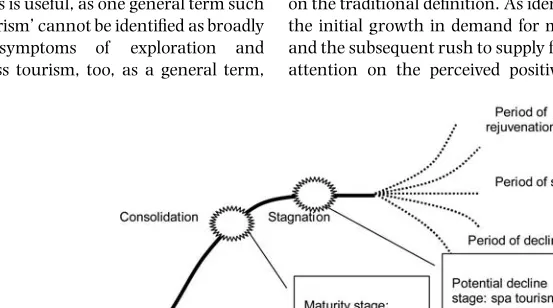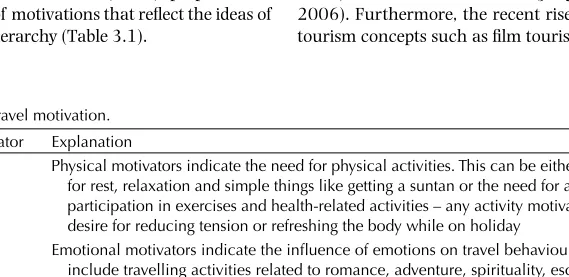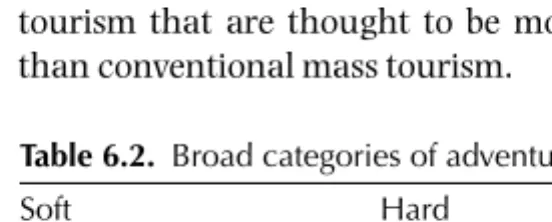The development of modern mass tourism in the 1960s provided access to a large (initially perceived as sustainable, some would argue) lucrative market. While mass tourism is homogenous in nature (a standardized, uniform product for a large market segment).
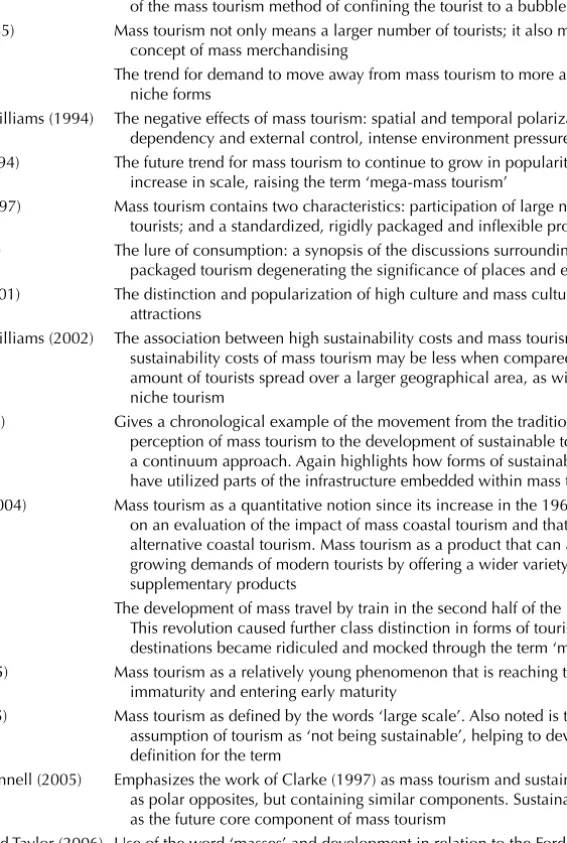
Look again at Table 2 and identify the other arguments proposed in relation to mass tourism
This chapter has identifi ed the importance of symbolic attractions in further complementing
Will niche forms of tourism ever become as popular as mass tourism? Why or why
It identifies some of the structural deficiencies that hinder development in LDCs and discusses the role of tourism in improving the situation. Part of the planning process requires that the benefits of tourism be optimized and the drawbacks minimized.
Analyse the impacts of tourism in a develop- ing country of your choice
What can be deduced from these catchphrases is the idea that tourism development entails significant economic and non-economic costs and benefits. As resources are limited, careful use and management of resources is critical, not least because of the need to ensure future availability and maximize the benefits of such activity.
Critically assess the role of tourism as a cata- lyst for economic and sociocultural develop-
Such compliance is a sine qua non for future sales and possible repeat business, given the discretionary and exogenous nature of tourism demand. Knowing the constraints LDCs face, flexible tourism policies are needed in a way that does not alienate the proverbial goose that lays the golden egg, be it the market (tourist) or market intermediaries (travel trade) or other international ones. organizations.
Evaluate the factors that must be considered in the management of tourism development
This need can be triggered by internal stimuli and experiences – the person has learned which objects, products or services can satisfy this need. Many of them fall under the heading of 'sustainability' and new types of tourists are emerging, such as the 'good tourist', the 'responsible tourist' and the 'green tourist'.
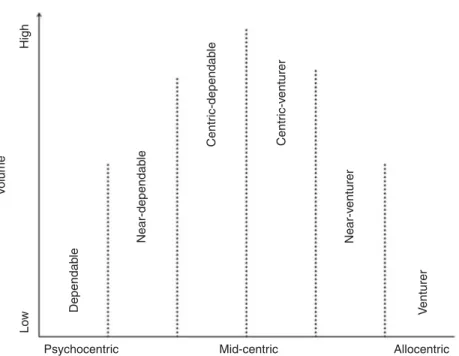
Think about the holidays you have taken so far. To what extent have they been infl uenced by
However, most people are not aware of their motives, as motivators can be latent and subconscious. The theories in this chapter do represent competing viewpoints, but they are not mutually exclusive.
Ask your friends and family about their reason for going on holidays and travel
Further, 'the past is seen in the way that we would like. On an optimistic level, we can use definitions and interpretations to examine the meaning of authenticity for the various tourism actors – the tourist, the local community and the industry.

To what extent is the idea of authenticity challenged by common stereotypes that we have
Moreover, while the conditions of postmodern society may call into question the idea of the authentic tourist experience, recent studies emphasize that authenticity still exists through a wide range of possibilities for social construction and negotiation (Wang, 1999; Buchmann et al., 2010). To what extent is the idea of authenticity challenged by common stereotypes we have?
To what extent has the condition of post- modernity challenged ideas of authenticity?
The search for authenticity has become a frustrated quest, as tourists can never be sure whether the object or culture they encounter is authentic. However, as Urry (2000) suggested, the post-tourist is aware of the game and plays the game.
Consider your own and other’s holiday experiences – how is a local performance or an
Understanding semiotics and the language of tourism is important as signs and images are used in many aspects of the tourism industry. Thus, the order in which we construct the signs and images of tourism changes the meaning and context.
Consider a tourism destination that you enjoy and evaluate the semiotics involved in the
This chapter introduces the semiotics of tourism and, more importantly, the semiotic language of tourism. In addition, it is important to recognize that the meanings or conventions used within tourism semiotics draw from a wide variety of sources.
Explain how semiotics can be used within research to evaluate destination image, per-
By taking the time to examine and analyze what images are used in tourism and what they mean, we can understand what. It is also important to ask the question of what is missing, as it is as significant as what is included.
Consider your own photographs from places that you have visited. What do they tell you
It is clear that the term is one of the most controversial concepts in the study and management of tourism. With the realization of the impact of mass tourism and the development of conventional tourism, many destinations and authors have argued for caution regarding the scale and pace of tourism development.
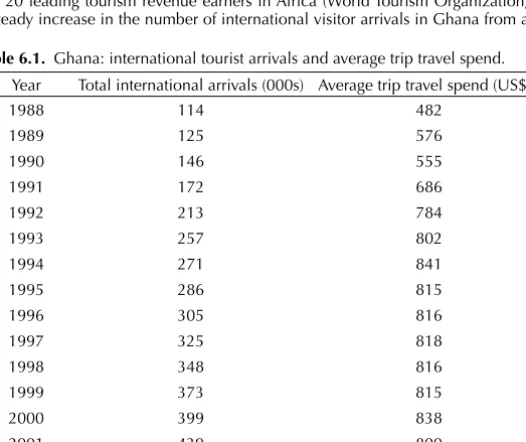
Managing the demand for visitation (e.g
The European Commission (2002) considers political-economic parameters as an expression of divergence in values and attitudes within the local community regarding tourism. Therefore, the capacity levels for the components are expressed in terms of: i) the level of specialization in tourism; (ii) loss of human labor in other sectors due to tourist attraction; (iii) revenues from tourism distribution issues at the local level; and (iv) the level of employment in tourism in relation to local human resources.
Managing the resource capabilities to handle use (e.g. through hardening the site or specifi c
There is a general consensus that the need to develop and utilize tourism carrying capacity tools that facilitate planners and decision makers in their efforts to control tourism development is growing. 2002) stated that there are four main strategic approaches in visitor management that can be used to reduce the negative impacts of visitors to a destination.
Managing the impact of use (e.g. reducing the negative impact of use by modifying the type
In most developing countries, local people or entrepreneurs are denied access to the tourism market due to the enclave forms of tourism. In the developed countries of the world, the CSR concept is not new in other business sectors.
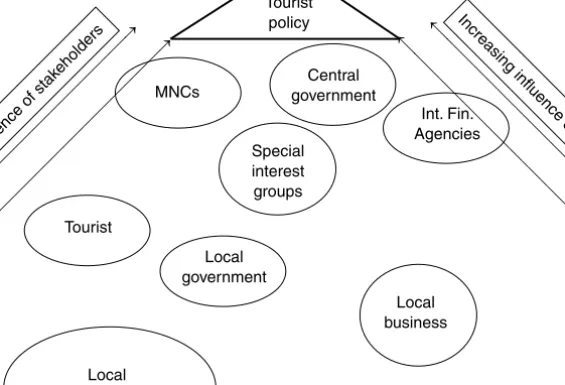
Conduct a literature search and extract at least fi ve diff erent defi nitions of the concept of
CAB International, Wallingford, UK, p. 2007) Stakeholders in Sustainable Tourism Development and Their Roles: Applying Stakeholder Theory to Sustainable Tourism Development. Kluwer Academic, London, UK, p. 2002) Sustainable Tourism in Protected Areas: Guidelines for Planning and Management.
Evaluate the role that communication can play in designing and implementing sustainable
1994) Tourism and Ghana's Development Process: Issues and Prospects for Creating a Viable "Post-Industrial" Service Sector in a Non-Industrial Society. International Journal Services Technology and management Tourism and the environment - some notes on the concept of carrying capacity. ed.) Tourism and Environment.
What is meant by corporate social responsi- bility? How can its incorporation in business
Tourism routes as a tool for economic development of rural areas – living hope or impossible dream. 2004). Carry out a literature search and extract at least five different definitions of the term.
Evaluate the overall benefi ts that sustainable tourism can bring to the local community in
However, this is often a contentious issue due to the sensitive balance between growth and development and the need to maintain a sense of community. They are the Moriori, an early subgroup of the New Zealand Maori and the aboriginal inhabitants of the islands.

Stakeholders will compete on prioritizing development agendas. Describe ways in which
What evidence is available and has been effectively researched to demonstrate the value of community-led tourism to communities in the UK and abroad. Whether more research is needed to determine the best model for delivering community-led tourism (ie through the public or private sector).
One of the principal aims of community- based tourism is sustainability. Identify processes
The ingredients for the approach to community-led tourism and bottom-up tourism are in principle aligned with goals, objectives and strategies and an approach that is largely consensual and highly dependent on achieving identity and values that are identified primarily using a scripted approach (Ray, 1998; . Bristow, 2001; Kneafsey, 2001). From initial research there appears to be little available as a toolkit for developing community-led projects, but for some rare publications from the public sector and.
Evaluate the best principles available to control and guide community-based tourism
Rural life took many forms in Europe, from the estates of the wealthy to small-scale farmers. Even today there is a desire to retain some of that belief that the countryside represents a lost, golden age of the 'pastoral'.
It contains unique, rare or superlative natural phenomena, formations or features or areas of exceptional natural beauty, such as superlative examples of most important ecosystems to people,
Rural tourism is currently mostly seasonal, small-scale and landscape-based (Hegarty and Przezborska, 2005). This led to a discussion about the popularity of rural tourism and its marketing.
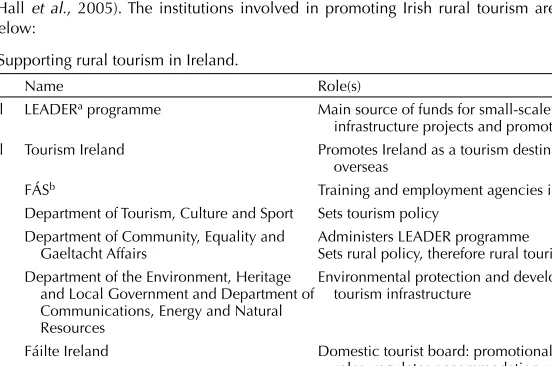
Why is it important to consider the history of rural tourism development when looking at
This chapter began with an introduction outlining what "rural" means in the context of rural tourism. The creation of niche products and the increasing diversification of rural tourism were mentioned.
Consider the example of the Republic of Ireland. Critically evaluate the challenges that
It also looked at the effects of rural tourism and how it interacts with other rural activities. Why is it important to consider the history of rural tourism development when viewing?
Critically assess why Spanish rural tourism has been late in developing, compared to north-
Rural tourism is not a new phenomenon and the chapter mentions some of the early attractions for rural tourists based on the romantic image of unspoiled space. Government support through international organizations and NGOs was highlighted in the case study of Indian rural tourism (Case Study 8.6).
Consider how the ‘Food from the Peak District’ initiative can develop new routes to
Subsequently, the discussion was updated, noting the sociological influences on rural tourism today. The EQM in the Peak District (Case Study 8.5) is aimed at promoting a more environmentally conscious attitude in business and consumers.
Consider other contemporary forms of marketing and media that could be used to
The Slow City, Cittàslow or Città Lenta movement is a spin-off of the Slow Food movement. This chapter provides an overview of the three concepts Slow Food, Slow Cities and Slow Tourism.
Develop an evaluative response to the con- cept of ‘slow’ as a tool for sustainable tourism
Another movement that has grown significantly in popularity in the UK is a revolt against signage and enforceable street furniture such as bollards and rubbish bins. This movement arose from an interest in the historical value and nature of the traditional streetscape.
What other elements of the tourist experi- ence could be described or packaged as slow?
At the turn of the millennium, this issue began to concern English Heritage, England's public sector body responsible for heritage. The documents consider the nature of land surfaces, pavement colors, historic curbstones, and street furniture such as barriers, lighting, and colors, and suggest street design to minimize the need for street furniture such as bollards.
Debate this question: is Slow Tourism a viable approach or ‘old wine in new bottles’?
This gives the community ownership of the art and so it is less likely to be damaged or vandalized. London, Great Britain, has become one of the most pro-graffiti cities in the world.
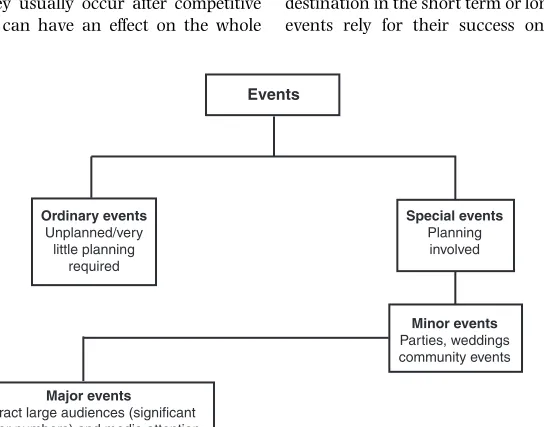
Identify an event in your region that has the capacity to be a hallmark event. Give reasons for
Analyse the ways in which events can be used to encourage tourism and the role they play
Evaluate the use of public arts in the area where you live. Assess the ways in which public
This chapter offers an understanding of sports and adventure tourism as a sub-category of mainstream tourism. However, local residents are largely susceptible to the negative economic impacts of sports and adventure tourism attractions.
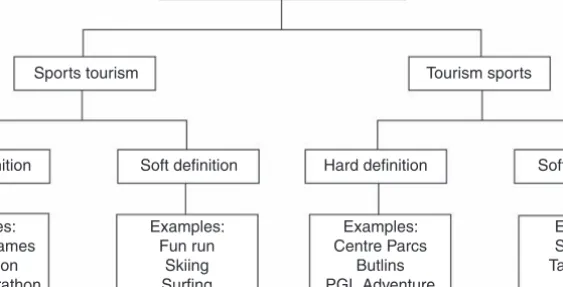
What are the benefi ts of profi ling sport and adventure tourist participants? How would you
The chapter has considered the broad nature of sport and tourism as separate entities and how. The chapter provides an overview of the industry, before undertaking an analysis of sport and adventure tourists, including their profile, behaviors and motivations.
Review the tourism-adapted motivational theories within this chapter. Highlight some of
There is also a need for research into new areas of sport and adventure tourism, such as virtual sport tourism and loss of health-promoting actives. At the opposite end of the spectrum is the onslaught of extreme sports tourism, where thrill-seekers constantly push the boundaries of experience towards greater adrenaline-fuelled danger.
Highlight current participant trends within the industry. Using this information, suggest
A continuation of adventure tourism also raises the question of how great the danger is and where the limits lie, in addition to questions about the social responsibility of the activity provider. Finally, the chapter analyzed the market in terms of size, trends and providers, in addition to internal and external issues affecting suppliers, and provided the information essential for gaining competitive advantage.
Revisit the sport and adventure tourism SWOT analysis. How might travel operators
The theory is closely linked to that of 'cultural commodification': the term given to the packaging of cultural events for sale (Richardson and Fluker, 2004). Current debates suggest that managers have historically drawn this line too early and 'over-protected' the natural environment to the detriment of the country's health and recreational needs.
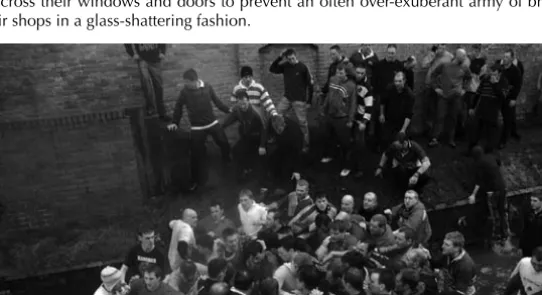
Strict nature reserve/wilderness area: a protected area managed mainly for the science
In fact, IUCN is the world's oldest and largest global environmental network, with a democratic membership association that assists more than 1,000 governments and non-governmental organizations, and engages over 11,000 volunteer scientists in more than 160 countries. By demonstrating how biodiversity is fundamental to tackling some of the world's greatest challenges, IUCN advances efforts to tackle climate change, develops the rationale for achieving sustainable energy, provides guidance on improving human well-being and shares expertise on how to build a green economy.
National park: a protected area managed mainly for ecosystem protection and recreation
Its task is to 'help the world find pragmatic solutions to its most pressing environmental and development challenges' (IUCN, 2010). One of the key tools in his toolkit is the appreciation and establishment of protected spaces: 'The world's protected areas are the greatest legacy we can leave to future generations – to ensure that our descendants have access to nature and all the material and spiritual wealth which it represents.'.
Natural park: a protected area managed mainly for conservation of specifi c natural
Critically, however, it is highly valued by governments, non-governmental organisations, UN agencies, companies and local communities, and accordingly helps develop and implement policies, laws and best practices.
Protected landscape/seascape: a protected area managed mainly for landscape/seascape
Managed resource protected area: a pro tected area managed mainly for the sustainable use of
Instead, Mount Fuji has become known as a national symbol because it is the highest peak in the country (12,388 feet) and one of the most symmetrical volcanic cones in the world. In many parts of the world, physical evidence of culture, built artefacts, must be accessed in order to gain maximum benefit for the visitor.
Consider the challenges surrounding the commodifi cation of cultural tourism against the
It will also be noted that access should be granted with a responsible attitude with sustainability at its core. Fortunately, acculturalization is not an automatic consequence of access, but if it does not happen, access must be carefully managed and monitored by both professionals and community representatives.
Consider instances where local planning law may have overly protected the environment to
Consider how a local cultural attraction or national government has addressed the need to
To encourage the participation of the local population in the preservation of their cultural and natural heritage. Access is also determined by the nature of the site (discussed in more detail in Chapter 12).
